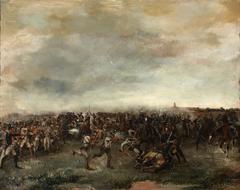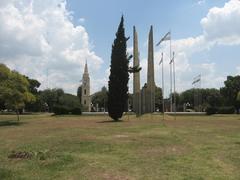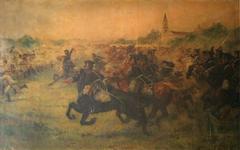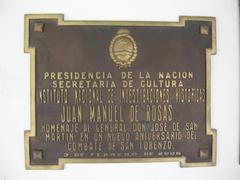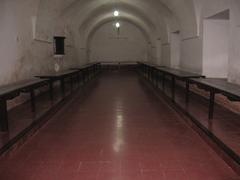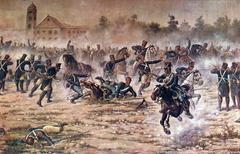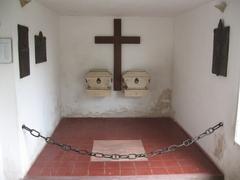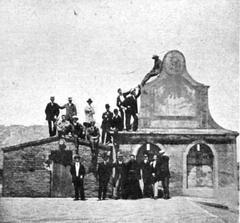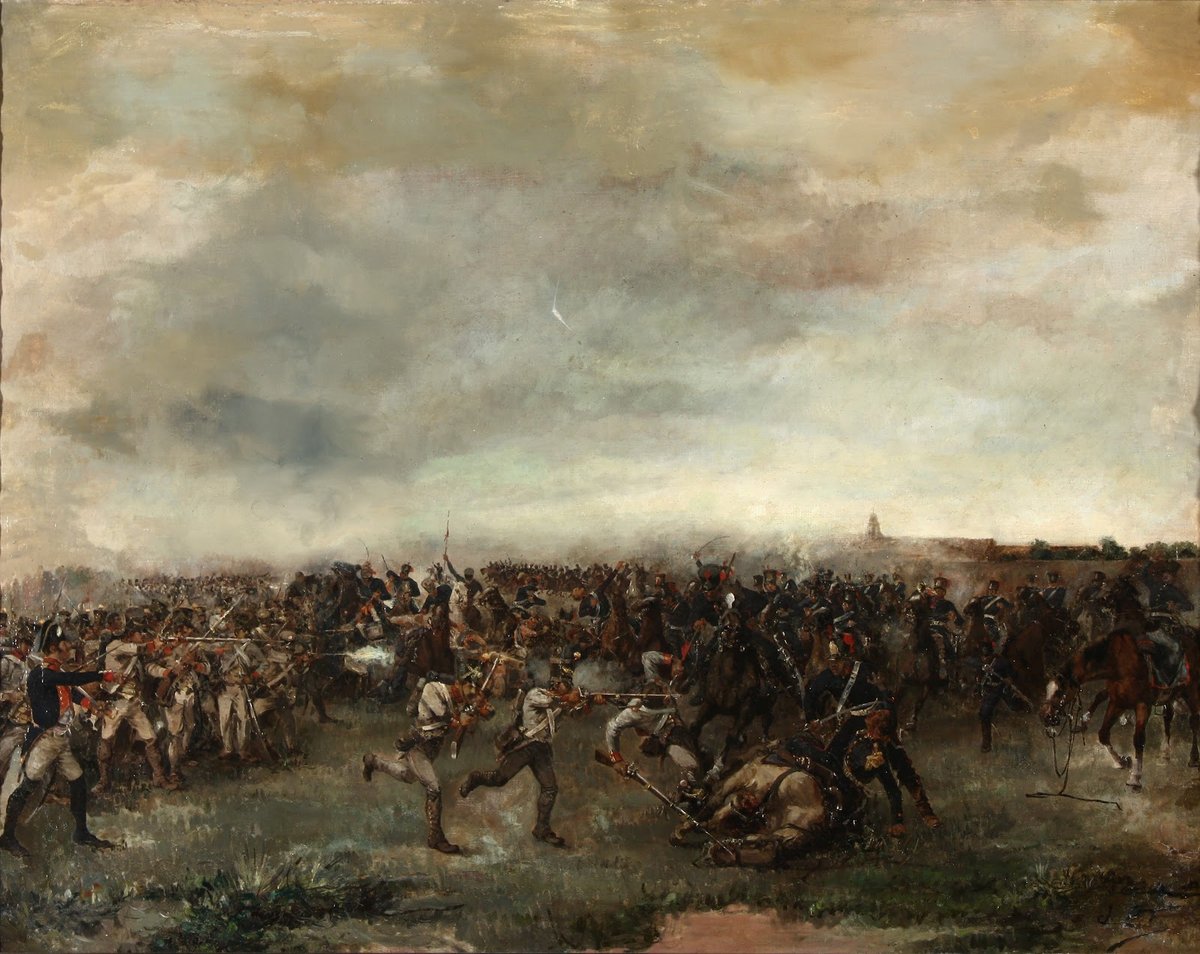
Battle of San Lorenzo Site: Visiting Hours, Tickets, and Historical Information
Date: 14/06/2025
Introduction
The Battle of San Lorenzo site, located in the historic town of San Lorenzo, Santa Fe Province, Argentina, stands as a cornerstone of Argentine heritage. This site marks the location of the pivotal 1813 battle—the first and only engagement fought by General José de San Martín on Argentine soil during the War of Independence. Anchored by the San Carlos Monastery and the adjacent Campo de la Gloria battlefield, the site today serves as a museum complex and memorial park, offering visitors a chance to walk in the footsteps of national heroes and engage deeply with the story of Argentina’s struggle for freedom.
Whether you are a history enthusiast, a cultural traveler, or visiting with family, the Battle of San Lorenzo site provides immersive educational experiences. Annual commemorations, interactive exhibits, and the ceremonial presence of the Regiment of Mounted Grenadiers ensure that the memory of this decisive encounter continues to resonate for generations. This guide offers all the essential details: opening hours, ticketing, tours, accessibility, travel advice, and nearby attractions, allowing you to plan your visit with confidence.
For official updates and multimedia resources, consult Casa Rosada, Audiala, and the San Lorenzo municipal museums site.
Historical Background
The Battle of San Lorenzo and Its Setting
On February 3, 1813, the fields surrounding the San Carlos Monastery witnessed a brief but decisive battle between Spanish royalist forces, led by General José Zavala, and the newly formed Regiment of Mounted Grenadiers under Colonel José de San Martín. The monastery, with its thick walls and strategic position on the Paraná River’s west bank, served as San Martín’s headquarters and field hospital.
The encounter lasted only 15 minutes, but its outcome was pivotal: the patriots repelled the royalists, securing control of the Paraná River and bolstering morale in the independence movement. The actions of Juan Bautista Cabral, who gave his life to protect San Martín, became legendary and are commemorated throughout Argentina. Today, the monastery, its preserved cell, and the Campo de la Gloria battlefield are central features of the site, offering a tangible connection to this foundational moment.
Planning Your Visit
Visiting Hours
- Tuesday to Friday: 8:00 AM – 6:00 PM
- Saturday, Sunday, and Public Holidays: 10:00 AM – 6:00 PM
- Last ticket sale: 5:00 PM
- Closed on Mondays and certain public holidays
(San Lorenzo Municipality)
Tickets and Admission
- General Admission: ARS $6,500
- Residents (with DNI): ARS $1,500
- Retirees, pensioners, children under 12: ARS $2,000
- School groups (per student): ARS $5,000 (accompanying teachers free)
- Children under 6 and local school groups: Free
- Payment: Debit/credit card, Mercado Pago, Naranja X, QR code
- Group bookings and guided tours: Email [email protected] or call (03476) 447 949 / 447 846
(San Lorenzo Municipality)
Guided Tours
- Available daily in Spanish; select English tours or materials may be available.
- Advance booking recommended, especially for groups or during peak periods.
- Tours offer insights into San Martín’s cell, the battlefield, and museum artifacts.
Accessibility
- Main museum areas and restrooms are wheelchair accessible.
- Some historic convent sections may have steps or uneven surfaces—contact ahead for specific needs.
Getting There
- By Car: 30 minutes north of Rosario via National Route 11; free parking on site.
- By Bus: Regular services from Rosario’s central terminal stop near the complex. (Audiala)
Main Attractions
San Carlos Monastery & Museum Complex
- Convento San Carlos Borromeo: The historic 18th-century monastery serves as the heart of the site. Explore original cloisters, chapels, and the refectory, many retaining colonial features.
- Museo Conventual: Exhibits on Franciscan religious life, missionary work, and a 360º multimedia recreation of the battle.
- Museo Sanmartiniano: Dedicated to General San Martín’s life and legacy, featuring dioramas and interactive displays.
- Museo de Historia Regional: Traces the region’s history from prehistory through independence.
- Museo de Árboles Históricos: Photographic exhibition of trees with historical significance in Argentina.
(San Lorenzo Municipality)
Campo de la Gloria Battlefield
- The open field where the battle took place, now a landscaped park with pathways, bilingual interpretive signage, and space for commemorative events.
Monument to the Battle of San Lorenzo
- Prominent monument with statues of San Martín and grenadiers, bas-reliefs of battle scenes, and memorials to fallen heroes such as Juan Bautista Cabral.
(Wikipedia)
Permanent Presence of the Regiment of Mounted Grenadiers
- Ceremonial detachment on site since 2008, visible during special events and national commemorations.
(Military History Fandom)
Annual Events and Cultural Significance
- February 3rd: Major commemorative events with reenactments, parades, and performances of the “Marcha de San Lorenzo.”
- San Lorenzo March: Composed in 1901, it is now an official march of the Argentine Army and a fixture at national events.
(Casa Rosada)
The battle’s legacy is reflected in town names, monuments, and school curricula, underscoring its foundational role in Argentina’s national identity.
Facilities and Visitor Experience
- Restrooms and gift shop on site
- Cafeteria: Light refreshments available; additional dining in central San Lorenzo
- Parking: Free, adjacent to the complex
- Photography: Allowed in most areas; flash restrictions in some exhibits
- Multimedia: 360º video recreations, historical films, and interactive exhibits enrich the visit (San Lorenzo Municipality)
Visitor Tips
- Best time to visit: Early February for commemorations, or during spring/autumn for mild weather.
- Language: Spanish predominates; some English tours and materials available.
- Duration: Allow 2–3 hours for a comprehensive visit, longer if attending events.
- For Families and Schools: Interactive exhibits and group tours available; contact ahead for educational programming.
Nearby Attractions
- Paraná River Waterfront: Scenic walks and boat outings.
- Museo del Automóvil: Classic car museum.
- Parque San Martín: Urban park for relaxation.
- Rosario: Only 25 km away, offering further historical and cultural sites.
Frequently Asked Questions (FAQ)
Q: What are the visiting hours?
A: Tuesday–Friday 8:00 AM–6:00 PM; weekends and holidays 10:00 AM–6:00 PM. Closed Mondays.
Q: How do I get tickets?
A: Purchase on site with card or QR code. Groups/guided tours should book in advance.
Q: Are guided tours offered in English?
A: Some tours and materials may be available in English. Check ahead or request a bilingual guide.
Q: Is the site accessible?
A: Most museum areas are accessible; some historic sections may pose challenges.
Q: When is the best time to visit?
A: Around February 3rd for commemorations, or spring/autumn for pleasant weather.
Conclusion
The Battle of San Lorenzo site is a must-visit destination to experience Argentina’s journey toward independence. With its meticulously preserved monastery, engaging museums, and evocative battlefield, the site offers a compelling mix of history, culture, and education. Annual commemorations and the presence of the Mounted Grenadiers create a living link to the past. Be sure to check official resources for up-to-date information on hours, tickets, and events, and consider downloading the Audiala app for enhanced content and guided audio tours.
Key Resources and Further Reading
- San Lorenzo: a heroic deed that marked the course of Independence
- Visiting San Carlos Monastery and San Lorenzo Battlefield: Hours, Tickets, History, and Tips for Visitors
- Visiting the Battle of San Lorenzo: Hours, Tickets, and Historical Attractions in San Lorenzo, Santa Fe
- Visiting San Lorenzo: History, Tickets, Hours & Cultural Significance of the San Carlos Monastery
- Battle of San Lorenzo Visiting Hours, Tickets, and Guide to San Lorenzo Historical Sites
- Battle of San Lorenzo
- Battle of San Lorenzo – Military History Fandom
